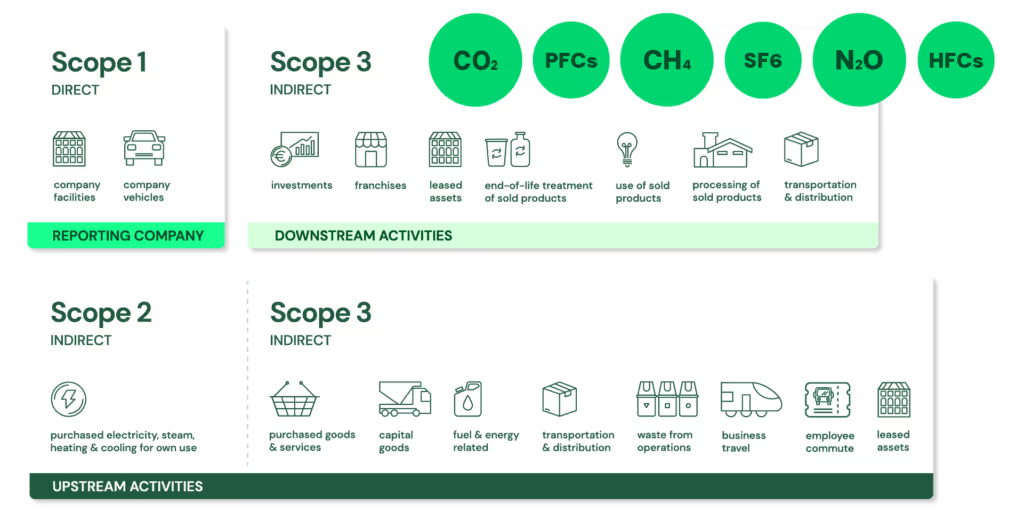Companies are facing growing pressure to reduce their carbon footprints, particularly regarding Scope 3 emissions, which make up the majority of a company's total carbon footprint. The Carbon Disclosure Project (CDP) reports that Scope 3 emissions represent, on average, 75% of a company's greenhouse gas emissions (GHGs). These emissions originate from various sources and provide a complete picture of a business's carbon footprint by covering the entire value chain. However, managing these emissions is the most difficult task for companies. Accordingly, this article will deep dive into the essential steps businesses must take to efficiently reduce their Scope 3 emissions and undergo value-chain wide decarbonisation.
What are Scope 3 emissions?
Scope 3 emissions, often referred to as value chain emissions, include all indirect emissions that occur throughout a company's upstream and downstream supply chain. In contrast to Scope 1 emissions, which are direct, and scope 2 emissions, which are indirect and related to energy, Scope 3 emissions cover a wide array of activities, ranging from supplier processes to the use of products sold. The GHG Protocol divides Scope 3 emissions into 15 categories, such as purchased goods and services, capital goods, business travel, and waste generated by operations.

Credit: Plan A based on the GHG Protocol.
How to reduce your company’s Scope 3 emissions?
To effectively reduce Scope 3 emissions, companies should prioritise gathering accurate emissions data, setting ambitious targets, implementing diverse reduction strategies, and consistently measuring and tracking their impact. The Science Based Targets Initiative (SBTi) recommends the following seven strategic approaches to help reduce a company's Scope 3 emissions:
Emissions reduction strategies are interconnected, and the interdependencies within Scope 3 inventories provide opportunities for collaboration and innovation. This creates a virtuous cycle where companies can lower emissions across their value chains while benefiting from the efforts of others. Additionally, it enhances the accuracy of data used for setting targets and tracking progress, encouraging the development of innovative, system-wide solutions.

Why is it so important to reduce your company’s Scope 3 emissions?
Decarbonising Scope 3 emissions is essential because they constitute the largest portion of a company’s carbon footprint. By addressing these emissions, companies can substantially reduce their overall environmental impact and contribute to the global climate goals outlined in the Paris Agreement. Focusing on Scope 3 emissions can also enhance corporate reputation, meet stakeholder expectations, and ensure compliance with increasing regulatory requirements. Companies that excel in this area can unlock business opportunities such as cost savings through improved efficiency, innovation in product design, and the potential to capture green market premiums.
While reducing Scope 3 emissions is complex, companies like Plan A can provide valuable assistance. Our platform offers precise data collection, automated CO2 emissions calculation, strategic carbon reduction planning, and audit-proof ESG reporting. Plan A’s comprehensive solutions empower businesses to measure, mitigate, and communicate their carbon impacts, ensuring a holistic approach to sustainability. By leveraging Plan A’s advanced tools, companies can effectively address Scope 3 emissions, meet ESG regulations, and transparently share their progress, paving the way for a greener future. As climate change discussions continue, the importance of Scope 3 will only increase, making it crucial for businesses to embrace and act upon it now.



.jpg)


.webp)
.webp)

